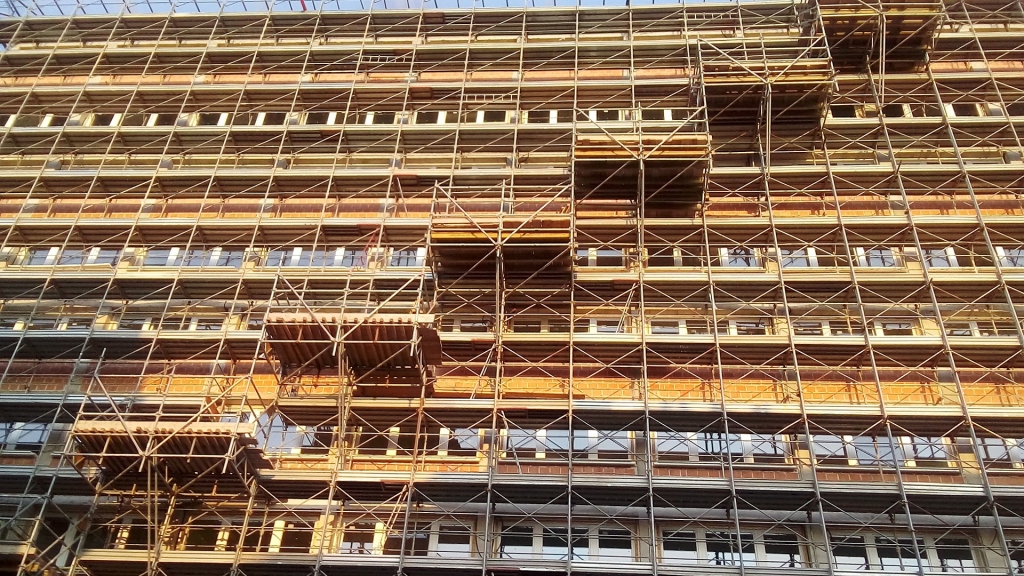Every experienced business owner is aware of how the physical appearance of the workspace – both, the interior and exterior one – can deeply affect its employees, but also the customers. The most precious thing you need to get out of your employees is their creativity, and if you want to make it blossom their working surroundings need to be well-lit and well-furnished. On the other hand, the shops that haven’t had a facelift since the day they were opened are the ones no one enters in. If your business space is shabby and rundown, your customers will lose faith in it. If this is the case, it’s about time to consider renovation. A total facelift can’t be accomplished by a simple replacement of furniture, flooring, and lighting – you will probably need new display areas and new workplace layouts, and sometimes a bit of construction work.
Since this need for renovation is a constant one and it can’t be done overnight, closing down your business during the process is not such a smart decision. Nobody likes the idea of stopping their cash flow but staying open during the renovation usually brings some temporary hazards to your customers and employees, so there are some safety measures that need to be taken care of.
Plan Big
The problem with planning lies in the fact that it is based on the assessment of the present situation, which can often be wrong. If your business area is not completely worn out, a quick look around might give you an idea there’s not much work to do. For example, you just need to ‛add a little bit of extra light’. But boosting artificial lighting surely won’t help your employees productivity. So you actually need more natural lighting, and for that, you probably need additional windows. That will certainly require some construction work and proper safety measures, especially if your office space is up high. This means you’ll also have to look at the outside of the building and put up some proper construction fencing. You don’t want people strolling by where something might fall down and smash their heads.
But barriers are not just for the outside. The construction work in occupied areas inevitably produces dust, debris, and odors which will affect your employees and clients in an very disruptive and negative way. This could even lead to various illness and chronic health problems such as contact dermatitis or asthma. So you need to employ barriers and other measures around the place in order to cut away these potential threats.
You’ll never know the exact amount of work that needs to be done before it actually starts, so you need to prepare a safety plan that follows the guidelines and regulatory rules established by OSHA. Keep in mind that even the work done while the business is closed can have a significant effect on the indoor air quality. With all this in mind, you need to complete a detailed safety plan before the beginning of construction and choose the people who will monitor it – the project owner along with a general contractor or a third-party firm.
Prepare The Terrain
Many business owners tend to think that planning and preparation are the same things, but the real preparation begins after the planning is done. And the core of this preparation lies in dealing with a constant problem of clutter. Basically, all you need to do is to get rid of all things except the indispensable ones. This may not sound that easy if your storerooms are already overcrowded, which is often the case. Forcing various stuff that your employees need on daily basis into those black pits is highly counterproductive. If you’re thinking about simply moving clutter to the aisles or stacking it high up on the shelves you should remind yourself that the point is to prevent injuries, not to create the possibility for additional ones. If you wanted to create an environment where various things can fall on your head or where you can slip and fall because of the lack of the maneuver space, you could’ve just left things as they are.
The first thing you need to do is to throw certain things out, and there are always some that are fit for the occasion. Just determine what you haven’t used for years (three is enough) and get rid of it. You’ll see that in the end you’re gonna need a large dumpster to haul all that waste to the garbage recycling plant. If there are a lot of things left that you use seasonally or important records you need to keep over a larger period of years, there are many pod companies that can provide you with a temporary workspace of various sizes – from small offices to full-sized business space.
Create a Quick Checklist
Now all that’s left to do is to write down safety standards that will enable the quick revision on daily basis. The evacuation routes need to be posted strategically around the place. Merchandise vendors must be reminded about renovation plans and dates. New display and fixtures must be on site and ready to install according to plan. Floor sweeps are required every hour. The areas of renovation must be closed. Protective items must be distributed to all employees and especially visiting customers and clients, since they could include elderly and children, and they haven’t been through safety training.
And the perimeter is secure. You’ve made enough room, you’ve made a plan for the bigger picture, and the checklist is there to keep it rolling.
